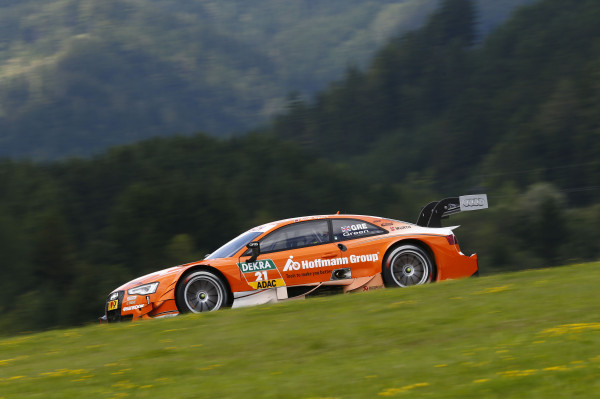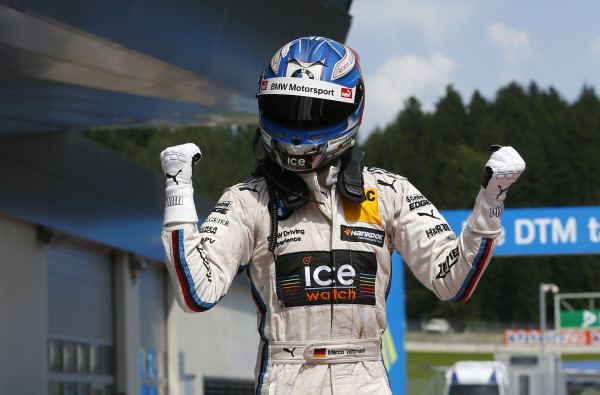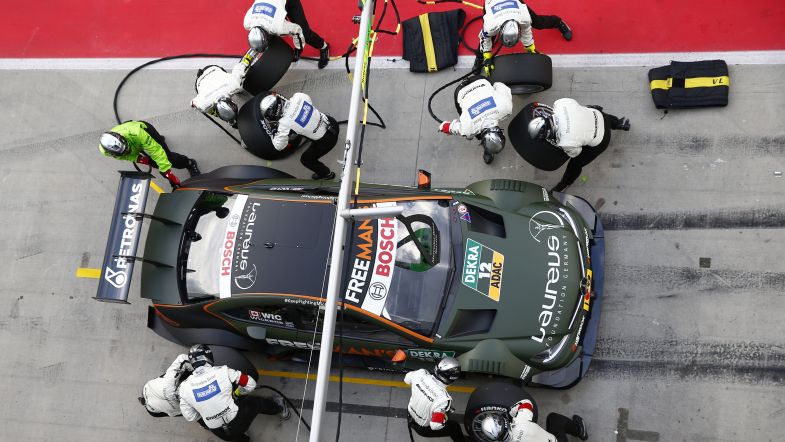Keep the pit lane safe, but don’t steal the show
The sixth round of the 2014 DTM, held at the Red Bull Ring in Austria on August 3rd, left some of the protagonists upset, if not angry, as the stewards’ decisions heavily changed the outcome of the race. We will analyse and explore the events which led a fantastic race into a comfortable – and deserved – BMW 1-2-3-4.
The first stint of the race was very entertaining. An incredible start from pole-sitter Robert Wickens in his Mercedes-Benz C-Coupé was not enough for the Canadian to fly away, as BMW’s Augusto Farfus chased him for the lead and attacked him all through the first part of the race, entertaining the massive crowd, while the battles held in lower positions made up for the lack of overtaking, thanks to Wickens’ great defensive driving.
When the pit stops took place, BMW Team RBM’s Augusto Farfus pulled off a successful undercut on the Canadian, having pitted one lap early and took the lead when Wickens rejoined side-by-side with the Brazilian. As the Mercedes made it back into first place however, fans were devastated to see the leader had received a drive through penalty for an unsafe release.
What happened during the pit stop is that the BMW Team MTEK crew were slightly quicker than the Mercedes boys, but not quite enough to put him ahead of the C-Coupé. Although Timo Glock was forced to slow down a bit, the release of the two was almost simultaneous and, as a result, the stewards’ decision appeared to be a little harsh.
In an open letter released on Wednesday, Mercedes boss Toto Wolff admitted that Pascal Wehrlein’s exit which impeded BMW’s Marco Wittmann was definitely an unsafe release case, and remarked how the consistency and severity of the punishment were ‘questionable’.
More drama was to come, however. As the Mercedes staff tried to convince the stewards that they had most likely confused Wehrlein with the similar-looking car driven by the race leader, but the drive-through penalty had already been awarded. Unfortunately for Mercedes, when three laps went by while they were arguing the penalty, it was escalated to a black flag by the officials.
Another penalty awarded to Audi’s Jamie Green due to a misunderstanding with his pit crew which led him to driving more than half the race on option tyres, also deprived the race of a protagonist for the race victory.

There is no winner in this situation. The big loser is not Mercedes, nor Audi: it is the show, the charge everyone wanted to see from Farfus – who had been overtaken by the Canadian in the meantime -, or even championship leader Marco Wittmann trying to make up for the positions he lost at the start.
Let’s take it from the beginning. The unsafe release rules are very important. They provide safe pit stops, the pit lane is always crowded as can be – especially in the DTM, where few drivers are off-sequence and most of the pit stops happen at the same lap. Safety is the key in modern motorsport, luckily. We all remember several accidents due to unsafe releases, including a tv camera man being hit by a tyre fallen off Mark Webber’s car in Formula One.
Those, though, are the extreme cases. The question is: was Wickens release really dangerous? The question is debatable, but with no contact between the C-Class and the BMW M4, there was no reason to regard it as a dangerous move, not something two professional drivers with two professional crews couldn’t handle.
This leaves several fans angry. What we want to see is a great show, which the combination of the beautiful DTM beasts and the Red Bull Ring was providing – and continued to provide in the last points-awarding places later on in the race. It would have been interesting to see how Wickens would handle a possible comeback from Farfus, or how would he have managed the degradation of the Hankook tyres, something we were all deprived of by the black flag awarded to the Mercedes driver.

Victory ultimately kissed Wittmann for the third time this year, giving him a very strong advantage in the championship, despite some spectacular efforts from Mattias Ekström to bag as many points as possible through fantastic, genuine battles towards the end of the race.
So, what is the solution? Toto Wolff said that “when in doubt, decisions must be made in the spirit of the sport and in the interest of exciting racing”. The sentence needs translation. If that means that moves which are ‘only’ potentially dangerous should not lead to penalties, that is wrong. If he means that, when in doubt, you should let them race and then impose a post-race penalty, he is probably right. As mentioned before, though, the solution is not to ignore the penalty and leading a driver who would surely have scored points in spite of the drive-through to get disqualified. That was unacceptable, although one can understand that Mercedes were trying not to ruin their only chance to win last Sunday.
The race handed BMW the best result in the DTM in some 22 years, and this matter will be probably forgotten by the next time a result such as this comes for the Bavarian manufacturer. As long as we remember, and of course keep discussing the matter in the interest of the sport, a well-deserved result will always carry the shadow of a doubt: Would Wickens have won it? We will never know the answer.










